Nurofen for cows
Written by Stephanie Coombes – editor
*Note: this article has been written so anyone, regardless of their background, can understand. Whilst I am not a veterinarian, I consulted with a number of practicing and policy veterinarians, as well as technicians from pharmaceutical companies during the research for this article. For a great technical summary on pain relief, check out this page.
They say there’s only two guarantees in life – death and taxes. Well, I think we could stretch that list out a little longer, and add in pain.
Whether psychological (e.g. a broken heart) or physiological (e.g. a broken leg) pain is something that no one can escape; it’s part and parcel with being a living being.
Similar to people, animals also experience pain. It’s not something anyone wants to see, and I can say with full confidence that 99.9% of people who work with livestock do everything they can to avoid causing an animal any pain. (I say 99.9% because like with everything else in life, there’s always that tiny minority of people who don’t adhere to the broader collective’s culture and values… and they genuinely need professional help.)
Anyway, there are a few times throughout a cattle’s life though where pain is unavoidable.
As a calf, or at the time of weaning, cattle undergo a few minor surgical procedures, including dehorning and castration. Which ones and at what time of their life depends on the individual property.
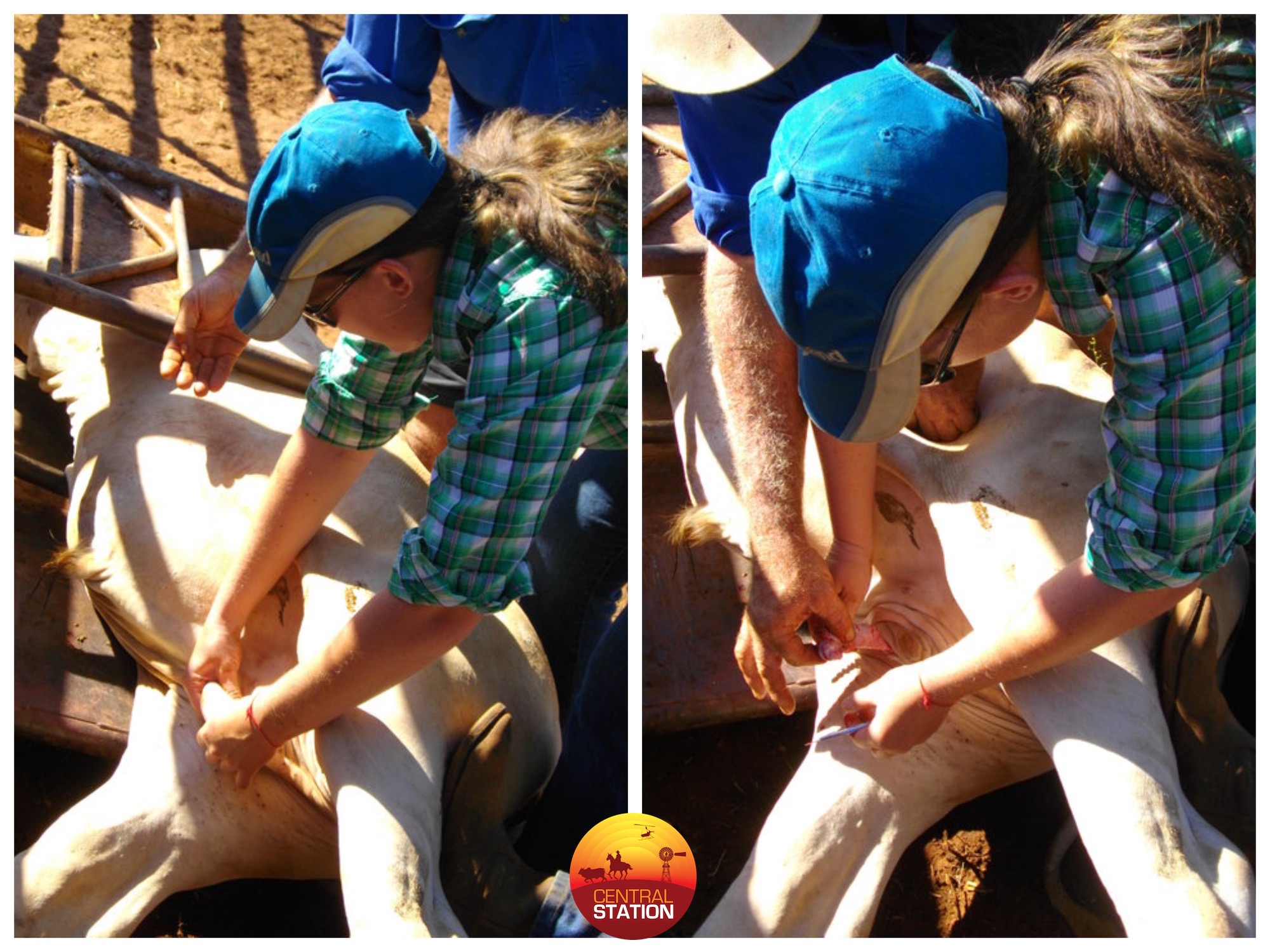 Me, learning how to castrate at ag college, undertaking the national unit of competency “AHCLSK325 – Castrate livestock”
Me, learning how to castrate at ag college, undertaking the national unit of competency “AHCLSK325 – Castrate livestock”
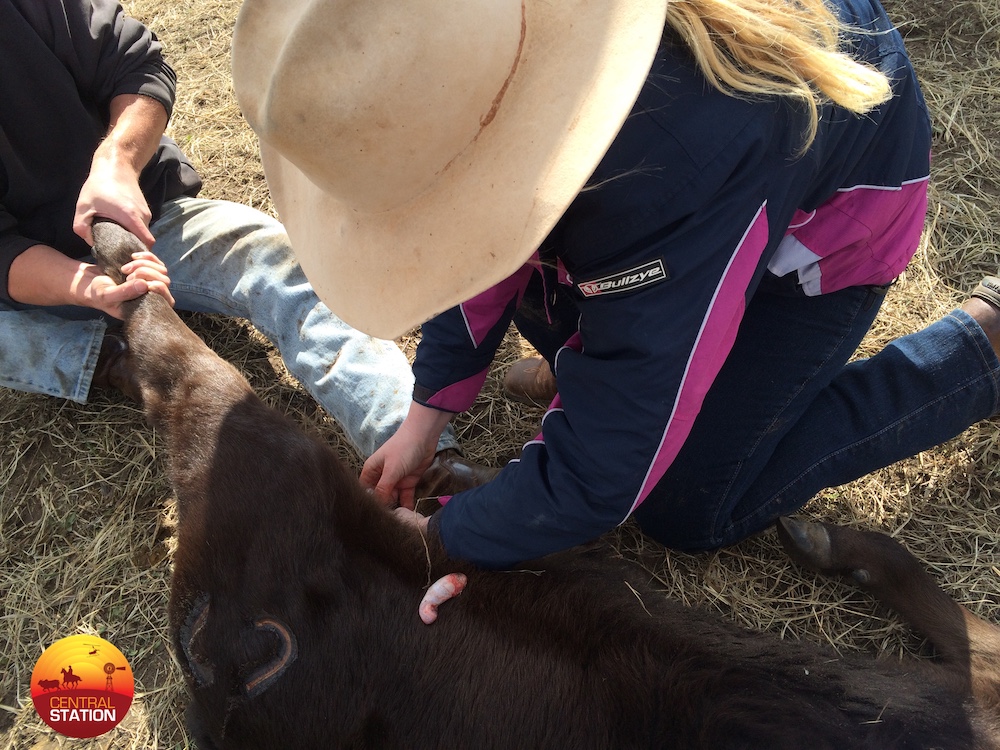 Castration is a global practice – here I am in the United States, castrating at a ranch branding.
Castration is a global practice – here I am in the United States, castrating at a ranch branding.
Thanks to the hard work of a number of people, pain relief medication for cattle has become commercially available in recent years. It’s been quite a journey to get to where we are, and the technology continues to be refined and developed further – industry is continuously working to improve the effectiveness of pain relief medication.
(Fun fact: Efficacy can be defined as the performance of an intervention under ideal and controlled circumstances, whereas effectiveness refers to its performance under ‘real-world’ conditions.)
In this blog, I want to share with you what I’ve learnt about the pain relief medication options that are currently available, and how they work.
Welcome to “Pain relief medication for cattle, 101”
Types of pain relief
There are two main classes of pain relief – anaesthetics and analgesics – and they target different areas of the pain pathway.
Anaesthetics
So you’ve got general and local anaesthesia. General anaesthesia is what you see on tv when the patient is put to sleep before surgery – you know, the bit where they put the mask on them and ask them to count backwards from 10?
Local anaesthetics provide short term pain relief by temporarily blocking sensory function (aka numbing the area), while allowing the patient to remain conscious.
Understandably, when it comes to livestock, a local anaesthetic is best.
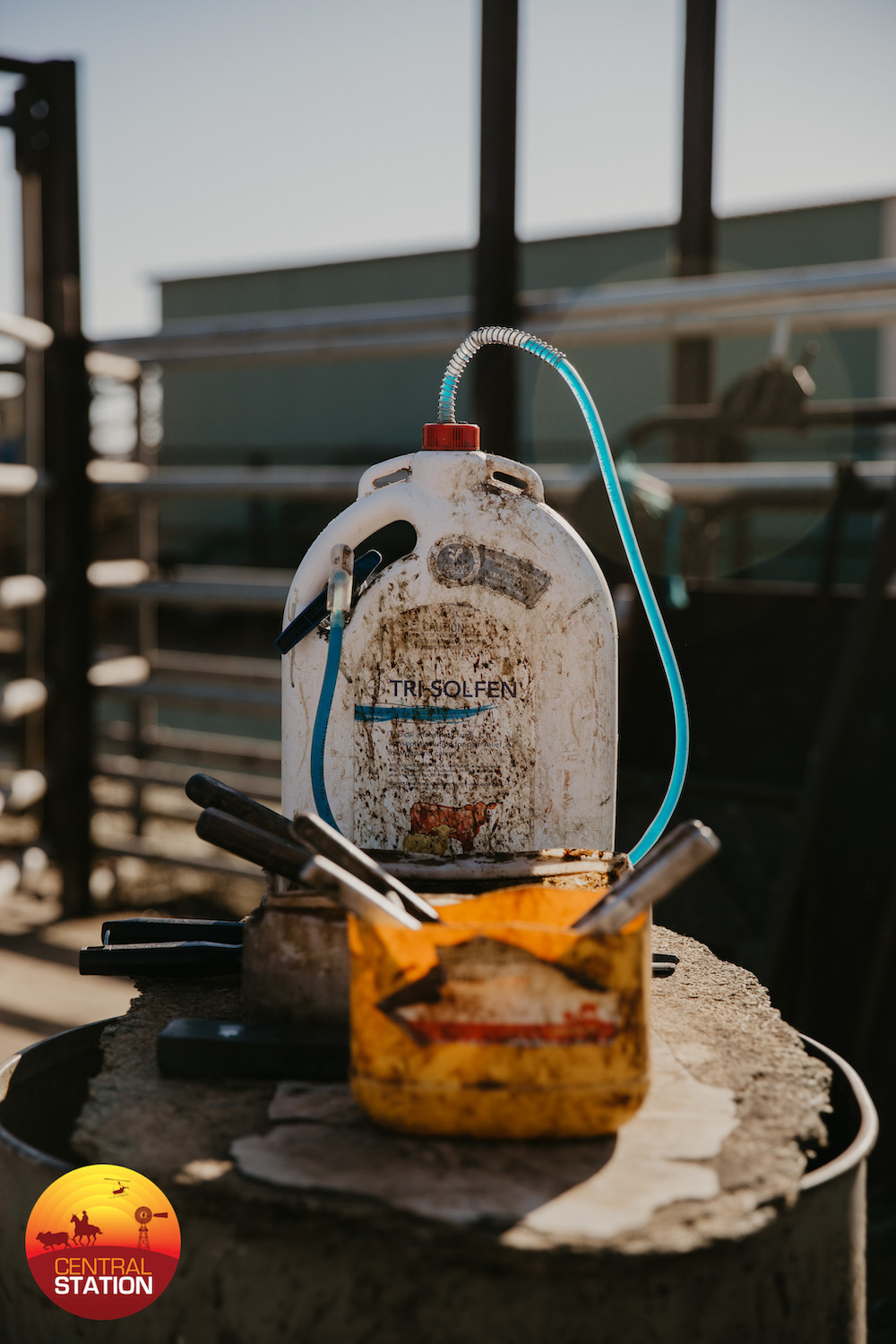 Tri-Solfen is a topical spray with anaesthetic properties. It only takes one day of dust and dirt in the yards to make the bottle look well used!
Tri-Solfen is a topical spray with anaesthetic properties. It only takes one day of dust and dirt in the yards to make the bottle look well used!
Analgesics
Put simply, analgesics are painkillers – they provide analgesia, which is a fancy word for pain relief. The most common type is non-steroidal anti-inflammatory drugs (NSAIDs) which act on inflammatory pathways in the body (couldn’t have guessed that from the name, huh?). A common NSAID that us humans take is ibuprofen.
So, do you use them separately or together?
Anaesthetics and analgesics can be used individually or together to manage pain – and I reckon most people reading this blog will have actually experienced this firsthand.
Ok, so we know that a local anaesthetic will reduce pain at the time of the procedure by numbing the area, and that a NSAID will act on the inflammation of the wound to reduce pain.
Can you guess when you’ve been administered a local anaesthetic and a NSAID to manage pain?
Drumroll please… everyone’s favourite (ok, least favourite) place of all time – the DENTIST!
If you’ve ever had a filling, or god forbid – root canal – you’ll know exactly what I mean. The dentist will administer a local anaesthetic via injection so that the area around your teeth becomes numb, and it doesn’t hurt when they start drilling. It’s an odd sensation, and I am very grateful that I wasn’t around when dentistry didn’t involve anaesthetic!
But, after a period of time the anaesthetic wears off – and thank goodness for that because it’s kind of hard to talk properly when part of your face is numb!
Now, this is when you may start to feel some pain or discomfort, as the area that experienced trauma is inflamed. I know, it sounds a little dramatic to call it “trauma”, but that’s the technical term. Anyway, this is when you may take an analgesic such as ibuprofen, which targets the inflammation that is causing the pain.
So, given the choice – which type of pain relief would you choose?
Local anaesthetics have a quick onset of action, but their duration of action is less than that period of pain caused by the procedure. Think back to that dentist analogy – its only a few moments from when you feel that needle inserted into your gum that you lose the sensation in that area, but once that anaesthetic wears off and you can feel your face again, you can still feel the residual pain…
On the other hand, Non-steroidal anti-inflammatory drugs (NSAIDs), can be used to provide longer lasting pain relief after the procedure.
Fun fact: most NSAIDs are actually registered to be used in conjunction with an anaesthetic – and using them on their owns counts as off-label use – meaning that you must have instructions from the veterinarian who dispensed the medication to be able to do so.
If only one type of pain relief is applied, we need to be aware that only one part of the pain pathway will be targeted i.e. either the immediate pain, or ongoing pain. To address both types of pain, multi-modal use is recommended.
Use of a local anaesthetic plus a NSAID appears to be the most successful combination to minimise the short to medium term pain response in cattle. For example, Tri-solfen topical anaesthesia could be used in calves for disbudding and castration by cutting (surgical castration), along with an NSAID analgesic such as Metacam. The topical anaesthetic will provide fast-acting pain relief once applied, and as it wears off the NSAID will help manage the ongoing pain.
Now, just quickly – it’s important to realise that Tri-Solfen is a topical spray (as opposed to a local anaesthetic administered by injection before a procedure) so it will only work when applied to exposed nerves, i.e. AFTER the procedure. So, while it’s better than nothing – that analogy of going to the dentist isn’t entirely accurate.
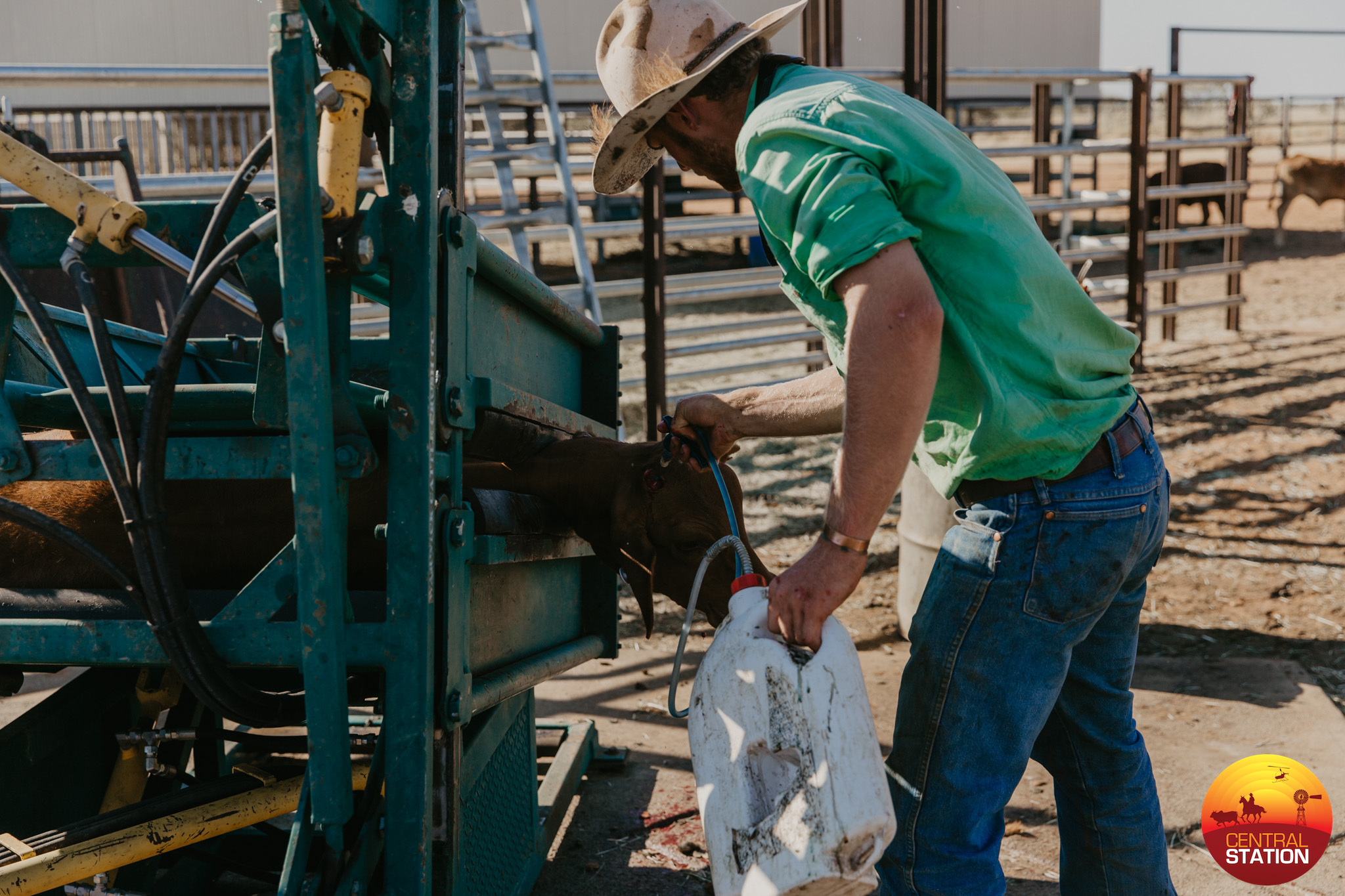 A ringer applies Tri-Solfen, a topical anaesthetic, immediately after dehorning.
A ringer applies Tri-Solfen, a topical anaesthetic, immediately after dehorning.
Before this turns into an encyclopedia, I will finish off with this: Livestock owners, and those of us who work with livestock, want to do the right thing – but we need to make sure what we’re doing actually has positive outcomes for livestock and isn’t just a “feel good” exercise. That is why the research in this area continues on. It’s not a simple area, but for now – if we can alleviate some level of pain, then let’s do it.
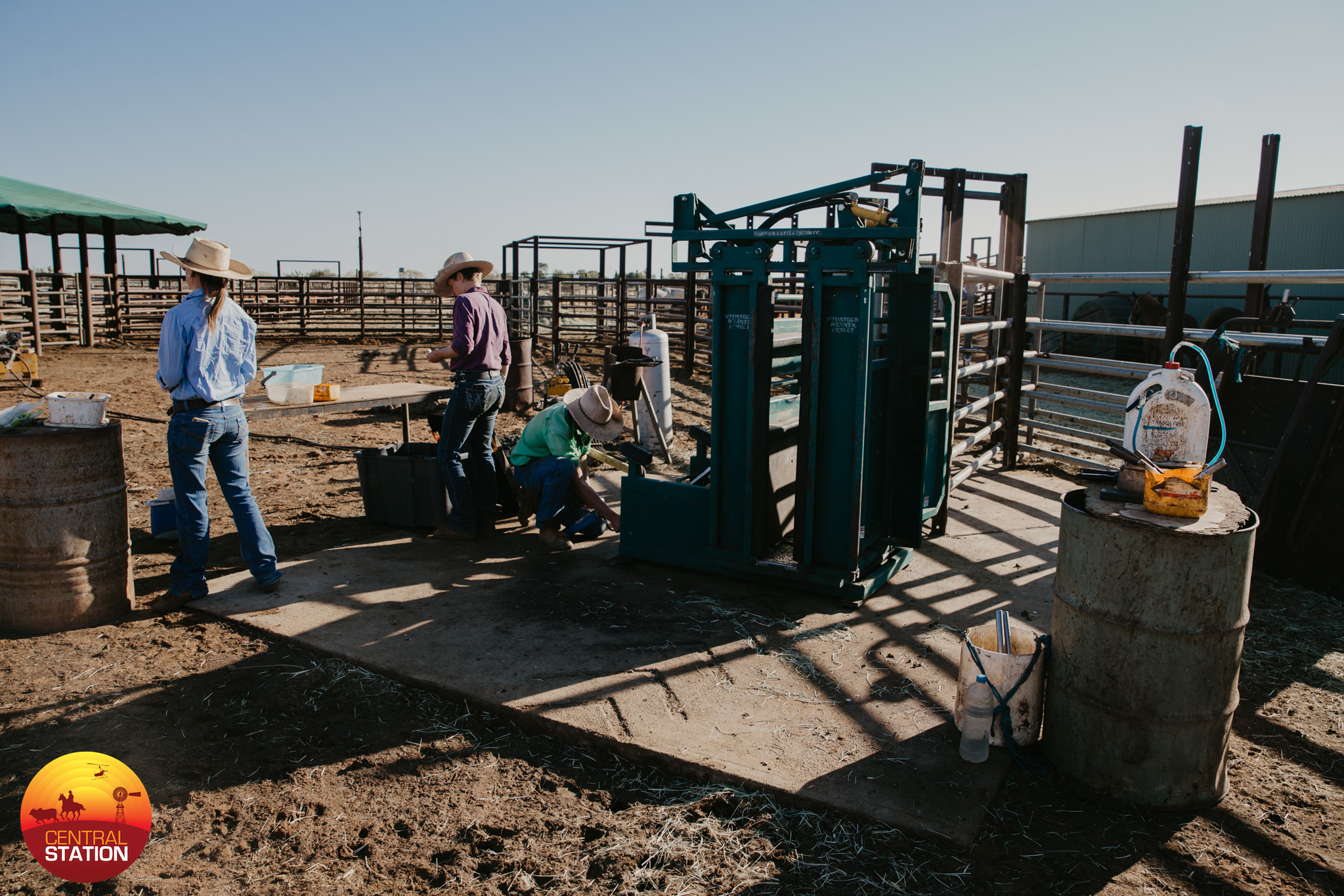 A station crew setting up for a day of processing weaners – note the pain relief alongside the marking tools in disinfectant.
A station crew setting up for a day of processing weaners – note the pain relief alongside the marking tools in disinfectant.
